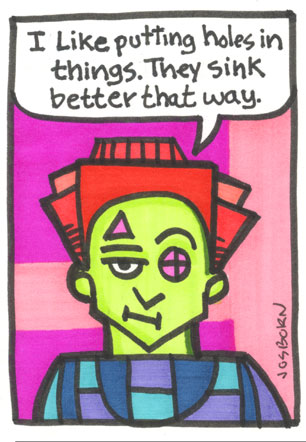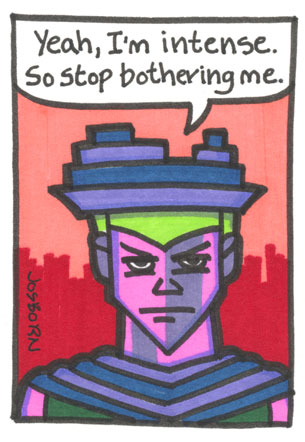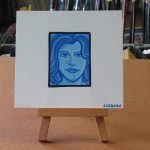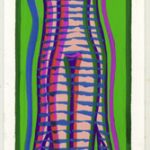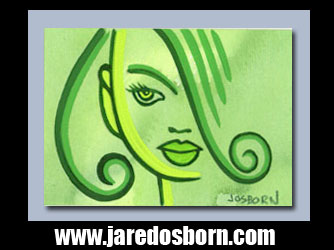Sometimes it’s tough getting those numbers up. “What numbers?” you ask. The number of pages drawn in one of my ink books. I’ve written about my sketch books that I call my ink books before. They’re the 100 page 5.5 by 8.5 inch sketch books that draw in. I like spiral bound sketchbooks. They lay open flat better than any kind of glued bindings. They’re nothing fancy. Just some basic drawing paper in a book that can be found in any arts and crafts store. They’re what I generate a lot of my ideas in. I make small and spontaneous ink drawings in them that I later mine for visual ideas. Each page has about nine small drawings on it and a page takes about an hour to do. But where do those hours come from? That’s always the tricky part. Isn’t it always?
I’ve managed to fill up one of these sketchbooks a year for eighteen years. That’s a lot of time and drawings. I started the first one a few months into the year 2000 (or at least I think so since I didn’t even bother to date my earliest pages) and that one took me until June 2001 to fill up. After that the books stretched across two calendar years but took only a year to fill up. I always wanted the book to coincide with a single calendar year but it really wasn’t that important. Sometimes I said to myself, “Wouldn’t it be cool if…?” but didn’t really apply a ton of energy to get the “If” done. It was just a daydream.
Yet over the years I gained a little more time with each passing book and each book was finished a little bit closer to the beginning of the year. Instead of June I finished the next one in the end of May, then the beginning of May, the end of April, and so on until finally with book 14 on January the first of 2013 I started a new book with the new year. It only took me thirteen years but finally my ink book year lined up with the calendar year and it’s been that way ever since.

As I look back at these books the nine or so little drawings a page is how they ended up but not how they started. In the very first book I didn’t even draw boxes first before drawing something in the box. I almost always do that now. I was still learning to make spontaneous ink drawings so my earliest drawings were often about learning to draw that way. There are a lot more patterns, large areas of black, and drawings jumbled one into the other in book one. It’s chaotic. I really didn’t have an idea of what I wanted to do with these drawing books nor did I have an inkling of how important they would eventually be for me thinking up ideas. It’s been an evolution.
I’ve never had any set schedule for drawing in these books. I draw in them whenever I can. I’ve always tried to get eight pages a month drawn and usually I do. But it’s not always easy. Sometimes I jump out ahead and draw four pages in the first week of the month but then another week or two can pass without me doing anything and suddenly I’m behind on those eight pages without noticing. Or I can do one or two pages a week like clockwork and never fall behind. I’ve even missed some months and had to make up double the pages next month. That’s rare but happens. In that case I put time aside and catch up by doing a couple of pages a day for a a few days in a row. I’ve got lots of irregular ways of drawing in these ink books.
I like to take my time with the book and fill it up slowly. That’s because with my spontaneous ink drawing I’ll tend to repeat myself if I do too many drawings in a row. The whole idea behind this Surrealist automatic drawing method is to clear your mind and draw from some subconscious dream state as much as draw with your conscious mind. That’s why I do it in ink with no erasing. But I will also fall into habits.
It’s not easy reaching that clear state of mind where I’m not thinking about drawing as I start a drawing. Sometimes nothing new comes out and I end up repeating something I have drawn lately. Or at least repeating a pattern. I start with the same lines that make a face and end up with a new face but one that’s similar to the old one. It’s tough not to repeat the familiar. It can also be tough to find that hour to get a page done. As we hit the month of November and the end of the year is in sight those hours really seem to got fewer. And then there’s the math.
As I said before I like to get eight pages a month done. That’s eight hours. A full workday a month when you add it all up. And eight pages a month times twelve months adds up to 96 pages. That’s a little short but if I tried to get nine pages a month done then I’d finish the book too early and throw off the timing. Somehow that seems worse than being short on the count. I don’t know why.
So all year I get my pages done. I’m on time. Eight pages a month. Month after month. Sometimes faster and sometimes slower but I always hit the average I need. I fell good about myself. Then November hits. I’m still on schedule but November is when I always seem the realize the number I’m aiming for, 96, means I still have four more pages to fill. At eight pages a month that’s an extra half a month’s work. Where is that time going to come from? It’s weird because I’ve gotten it done just fine since 2013 but it still sneaks up on me and that’s where I am now. The end of the year is really sneaking up on me.



